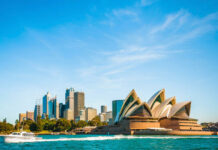ES: India is heading for elections next year. What is your take on this governments’ policies towards the exhibitions industry?
Ravinder: Interesting and timely question. IICC was inaugurated a few days ago by PM, Narendra Modi, and in his inaugural speech he said that, “Exhibitions are the need of the hour”. I think exhibitions are now being recognised by the government, and this will continue. Due to election, I don’t see any changes in policies but I do foresee growth. Dwarka was started by Kamalnath Ji from the previous government and BJP government picked it up. So momentum is in the industry & I’m sure that the next government will take it forward.
ES: Do you think the exhibition industry is impacted by the political environment of a country?
Ravinder: No, it’s not. The industry is impacted by the economic environment. UFI came out with a study according to which in the past year, Indian Exhibition Industry has shown the fastest growth in Asia. Our industry grew 11-12%, while our economic growth was around 8%. This has happened for the first time that the exhibition industry has grown even more than the economy has.
ES: With India overtaking China as the fastest growing nation of the world, along with the ongoing US and China trade war. Do you think India can pick up synergies and progress?
Ravinder: I think we’ve compared ourselves with China for long. And we would’ve overtaken China in terms of growth in any case. If you compare the exhibition industry statistics of the past five years from India and China, you’ll notice that while China has been more or less stagnant, India has shown growth.
ES: How far has India evolved in terms of Ease of Doing Business?
Ravinder: Recently, I was in Taiwan for the TITRA MICE Forum and I spoke about the 3 game changers for the Indian MICE Industry. One, venue developments, two, introduction of standard taxation i.e. GST and third, Ease of Doing Business. FDI today is on an increase…IKEA has opened, infrastructure is expanding and Defence industry is showing developments. And the reason behind this is ease of doing business. There are still obstacles present, but not as many. And this reflects on the exhibition industry.
ES: Recently at ICPB’s CIC Conclave Suman Billa said that India is doing great when it comes to Tourism and that it touched the 10 million mark in 2017. And Mission 20 million by 2020 has been set. According to you, how can India attract more tourists?
Ravinder: A strong initiative is being taken by IEIA, Ministry of Commerce, Invest India and many other bodies i.e MEET IN INDIA. It is on the initial stages now, but we have the tools to promote it. IICC in Dwarka will hold 10000 people, Pragati Maidan in Delhi can accommodate 7000 and Reliance in Mumbai can hold 3000-4000 people. We have the venues and now we can move towards increasing the number of business meetings, through which MICE Tourism will definitely increase.
ES: A lot of factors affect Tourism in a country like Airport, Logistics and Infrastructure. Do you feel these dots are connected in India, for our development in the sector?
Ravinder: As an Indian I feel proud of the infrastructure that we have. Delhi airport is winning all these awards, there are expansions plans being implemented in Mumbai. I think the only drawback that we still have, are the Railway services in India. Our railway services are not on par with Japan or Europe in terms of basic facilities like food and washrooms.
ES: Do you think we stand by the standards of Atithi Devo Bhava? Do you think our hospitality industry is better when compared to other countries?
Ravinder: Hospitality is in our culture. I even said this in Taiwan; we have hospitality in our genes. And if you join it with organised and great infrastructure like hotels and restaurants, the people are bound to visit. I give credit ICPB and Ministry of Tourism for this; they have carried everything in such a structural form that our hotel industry is world class.
ES: What can India do to attract Global Congresses and Global events?
Ravinder: The thing is, we don’t have venues for global events yet. For Global Congresses, venues are planned 2-3 years in advance. And I’ve had meetings with people from Convention centres and with LC Goyal, CMD at ITPO, and the inquiries have already started coming in; so tentative bookings have been made. 10 years from now I don’t see a lack of venues being an issue for the Indian Exhibition Industry.
ES: A large conference or congress involves exhibitions as well. So should we also be focussing on that?
Ravinder: They will come automatically. FIATA congress is happening tomorrow in Delhi with around 2000-3000 delegates, there is an exhibition attached to it. R.E. Rogers has handled logistics for many conferences and congresses, and more often than not, there is an exhibition organised simultaneously. And venue providers are aware of it. If you look at Pragati Maidan, they are building a state of the art convention Centre and exhibition venue.
ES: What kind of support do you expect the government of India to extend to the exhibition industry?
Ravinder: In terms of infrastructure, I think government of India has shown great support. IICC and Re-development of Pragati Maidan are perfect examples of that. But most importantly, the government has now started listening. The IEIA has been in dialogue with Services Export Promotion Council under the ministry of Commerce and Industry at the highest level.
ES: There are many collaborations, mergers and acquisitions happening in the exhibition industry. What is your take on this? Is it a healthy sign for the exhibitions Industry?
Ravinder: Why not? It’s a free market. In the time of Fiat when Maruti came to business, everyone thought that it would just take over the whole market. I know there are some people who think that these mergers and acquisitions are not good for the Indian industry. But they are giving employment to people & bringing in new products amongst many other benefits. I believe in a free market and the potential that it has.
ES: Personally, how has the year 2018 been for R.E. Rogers? What were your major projects, and what are your upcoming plans?
Ravinder: It has been a good year, there was vibrancy. Our vision is always to be number one. And I say it with humility, that we have maintained that position. This year, we expanded in terms of business overseas. We are also heavily involved in defence, and in the free trade zone. We’ve made vertical expansions and not at the cost of our core business. Most recently, we have handled the Bryan Adams Tour in 5 cities across India.
ES: You’ve worn many hats since you joined the industry & taken up many roles. How do you manage to find time for your work?
Ravinder: I act as an open, free, transparent consultant to anyone who comes to me. I am there for anybody who needs some advice. As far as R.E. Rogers is concerned, we have a highly professional team running the business. We have highly experienced people working for us. The team members are great leaders and know the importance of delegation. Sudhir Dhawan, Manoj Kumar, they all great at what they do. We have a team of about 120-125 employees, and in order to ensure that no one is overworked, we make it a point that people have to go on holidays. The company pays. We give flexibility wherever possible. We are the Rogers family. And when you use the word family, you have to mean it. We have one of the lowest attrition rates in the industry!

















